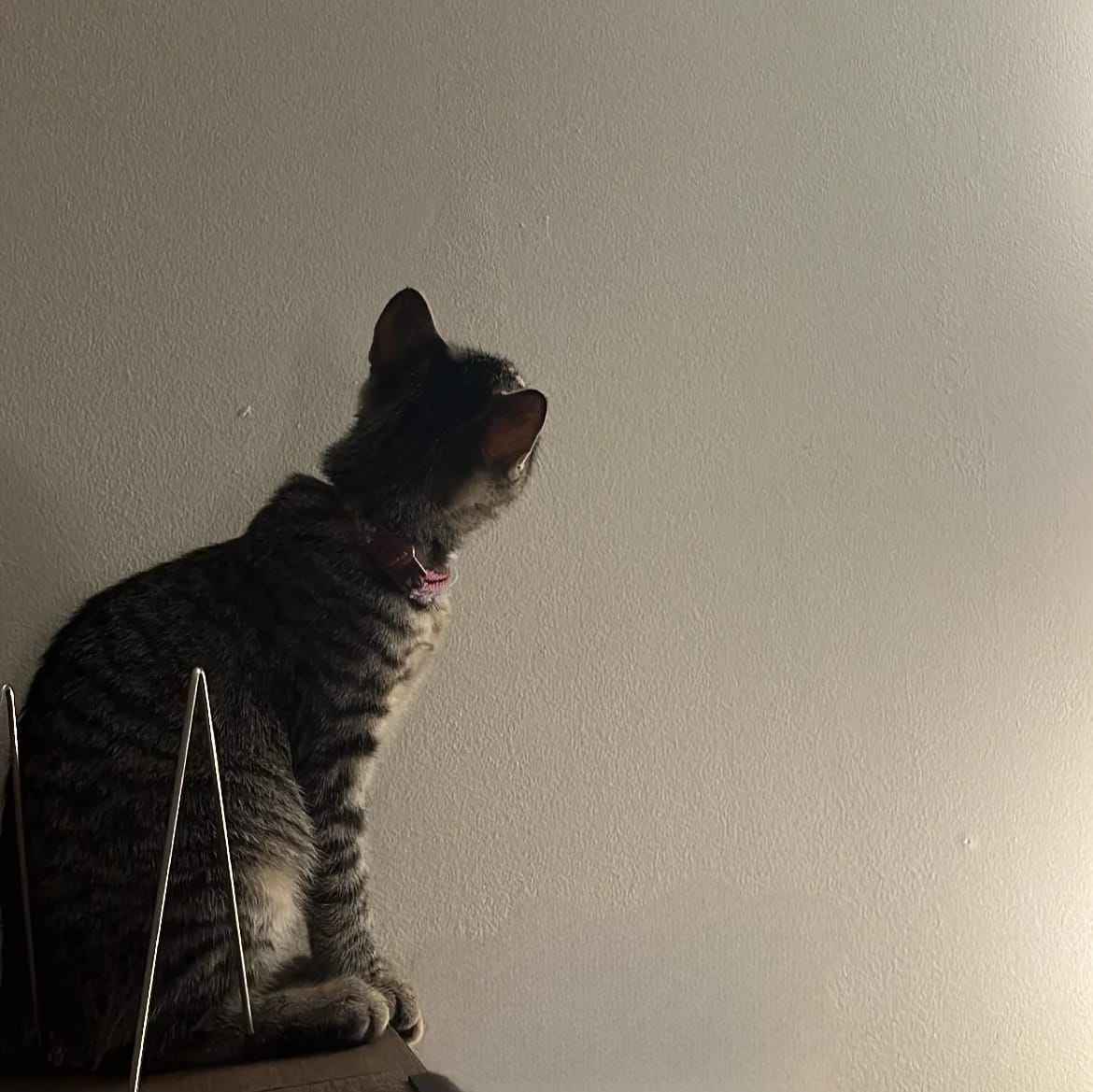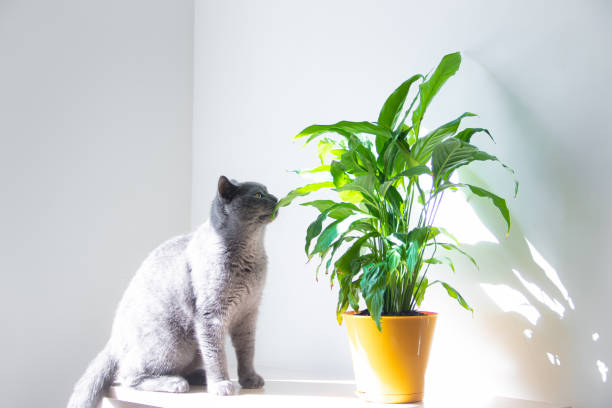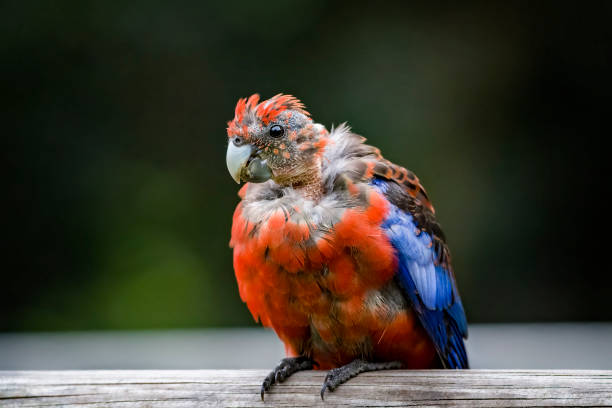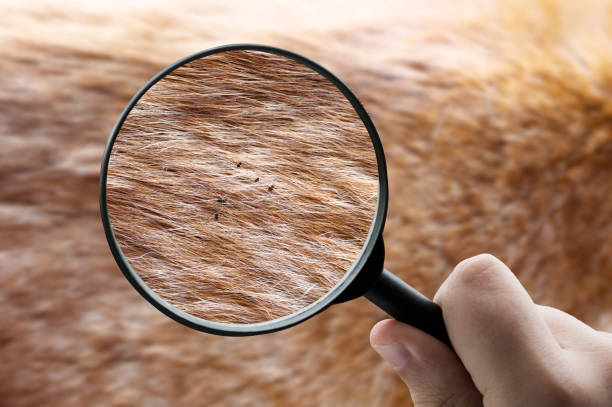Why Does My Indoor Cat Stare at the Wall Constantly
You’re watching TV when you notice your cat sitting perfectly still, staring intensely at what appears to be… nothing. The blank wall. For 20 minutes straight. Sound familiar? It’s one of those moments that makes you pause and quietly ask, “Why does my indoor cat stare at the wall like that?” The silence, the stillness, the focus…. it’s weird, and maybe even a little unsettling.
It’s not just a random habit. Wall-staring is one of those indoor cat weird behaviors that leaves people scratching their heads. Sometimes it looks playful. Other times it feels a bit spooky. Some think it’s harmless. Others start to worry if it could mean something more serious like cat hallucination symptoms or early signs of cat neurological problems.
Your cat might be tapping into instincts that go deeper than what we see. Feline visual hunting instincts, sensory triggers, or even boredom could all play a part. If your indoor cat is staring at the wall too often or for too long, it’s worth paying attention. What looks like nothing to us could be something very real to them or a signal that they’re not getting enough mental stimulation.
Before you shrug it off or worry too much, let’s look into why this behavior happens and what it might be trying to tell you.
Is My Cat Staring at the Wall Normal?
Most times, if you’re wondering “Why does my indoor cat stare at wall?” the answer is simple. Cats have sharp senses. What looks like a blank wall to you might be a tiny shadow, sound, or movement they picked up. A fly, a flicker of light, or even dust can grab their attention. This is part of normal cat sensory behaviors and often nothing to worry about.
But there are times when wall-staring could be a sign of something more. It’s good to know the difference between normal and concerning.
Normal Wall-Staring Looks Like:
- Your cat glances at the wall then moves on after a while
- Stares for a few minutes, then goes back to playing or sleeping
- Seems alert but relaxed
- Happens once in a while, not daily
This often links to feline visual hunting instincts or just indoor cat weird behaviors. It can even be boredom. A bored indoor cat might stare just to pass time, especially in a quiet home with no toys or windows to watch.
When It Might Be Serious:
- Staring at the same spot every day for long periods
- Seems frozen, confused, or disoriented
- Doesn’t respond to your voice or touch
- Shows signs of head tilting, walking in circles, or trembling
- Other changes like eating less or sleeping too much. Weight changes in senior cats can be particularly concerning. If you notice your older cat losing weight despite eating normally, this could indicate underlying health issues that may also affect behavior.
These could point to cat neurological problems or even cat hallucination symptoms. If this happens, don’t wait too long. Call your vet if your cat stares at the wall like this more than once a day or for longer than 10 to 15 minutes at a time.
Cats also deal with things like whisker fatigue in cats or other sensory overloads, but a vet can help rule things out. Trust your gut and get help if it feels off.
8 Science-Based Reasons Why Cats Stare at Walls
If you’ve ever caught yourself asking, “Why does my indoor cat stare at wall like that?” you’re definitely not alone. It might seem odd or even a little creepy, but there’s often a real reason behind it. Here’s what science says.
1. Superior Hearing – They Actually Hear Something
Cats can hear much better than we can. While humans hear up to 20,000 Hz, cats can pick up sounds as high as 64,000 Hz. The American Veterinary Medical Association explains more about cats’ superior hearing abilities. That means your cat might be picking up squeaks, scratching, or tiny movements from behind the wall that you won’t even notice.
It could be anything from mice and insects to the sound of your house settling. Pipes, wiring, or even small air drafts can also create noises that catch your cat’s attention.
A real story from one pet parent: “I thought my cat was going nuts, staring at the wall every night. Then I called pest control and found out we had mice inside the walls.”
This is a common case where cat staring behavior explained itself once the source of the sound was discovered.
2. Enhanced Vision – They See What We Can’t
Your cat’s eyes are built to catch even the smallest movement. They see well in low light and can detect UV light, which humans can’t. This helps explain why they notice dust particles floating, tiny insects crawling, or flickers of reflected light bouncing off walls.
Cats also have six to eight times better night vision than humans. Learn more about feline vision from VCA Animal Hospitals’ comprehensive guide. So while the wall looks blank to you, your cat may be tracking something that moved quickly or gave off just a bit of light or shadow. This is part of normal cat sensory behaviors and not usually anything to worry about.
3. Boredom and Lack of Mental Stimulation
Indoor cats need more than food and a soft bed. If your cat isn’t getting enough mental or physical activity each day, staring at walls might become a way to cope with boredom. This is a quiet sign of a bored indoor cat.
Experts recommend at least 10 to 15 minutes of playtime daily. The ASPCA provides detailed guidelines for cat enrichment and exercise. Without this, cats may create their own entertainment by fixating on something simple, like a wall. It gives them something to focus on, even if nothing is actually there.
If this sounds like your cat, try rotating toys every few days, adding puzzle feeders, or giving them shelves or perches to climb. A little bit of variety can help reduce indoor cat weird behaviors like constant wall staring.
4. Hunting Instincts and Predatory Behavior
Cats are natural hunters, and that instinct doesn’t go away just because they live indoors. In the wild, cats would hunt 10 to 20 small prey every day. International Cat Care explains feline hunting behavior and indoor alternatives. When your cat stares at the wall, they might be tapping into those feline visual hunting instincts.
Even if there’s nothing behind the wall, the act of staring and waiting could feel like hunting practice. This kind of behavior can also be triggered by slight movement or noise, even if it’s not from a real animal.
Scheduled play with toys that mimic prey, like feather wands or moving mice, helps satisfy that instinct. It can also prevent other unwanted behaviors, especially when paired with regular bonding time.
5. Stress and Anxiety Responses
Just like people, cats can get stressed. Changes like moving to a new home, the arrival of a new pet, loud guests, or even small shifts in your routine can trigger anxiety in indoor cats. In some cases, they stare at the wall to calm themselves down. It becomes a quiet way to zone out when they feel uneasy.
Wall staring in these moments isn’t random. It’s your cat’s version of self-soothing. Other signs of stress can include hiding, overgrooming, or sudden changes in appetite. These are common stress signals in indoor cat weird behaviors.
To help your cat feel safe, try keeping routines predictable. Feed them at the same times, and avoid rearranging their space often. You can also try cat pheromone diffusers or create quiet corners where they feel secure. PetMD offers guidance on reducing stress in indoor cats.
6. Vision Problems or Age-Related Changes
If your cat is getting older, wall staring might be linked to eyesight problems. Senior cats, especially those over 7 years, can develop vision issues like cataracts, glaucoma, or other retinal changes. In these cases, they might stare at the wall as a way to adjust to what they’re seeing or help figure out where they are in the room.
This can be part of normal aging, but there are signs to watch for. If your cat starts bumping into furniture, hesitates before jumping, or seems confused in bright or dim light, a vet check is a good idea.
In older cats, you might also see cat neurological problems beginning to show. Getting ahead of these changes can make a big difference. For senior cat care information, visit the American Association of Feline Practitioners’ senior care guidelines.
7. Whisker Fatigue and Sensory Overload
Whiskers aren’t just cute. They help cats feel their way through the world. But when they’re overstimulated, it can make your cat uncomfortable. This often happens from narrow food bowls that press against their whiskers while they eat.
Some cats then avoid eating or become moody. In rare cases, they might use the wall as a sort of “reset” spot, where they can calm their senses. This could explain part of the cat staring behavior explained by whisker fatigue in cats.
Try switching to a wide, shallow feeding dish. This simple change can make a big difference. Learn more about whisker fatigue from the Cat Behavior Associates.
8. Territorial Scanning and Security Behavior
Cats are wired to check their surroundings often. Even if they live indoors, their natural instinct to scan their space doesn’t go away. Most cats do this every two or three hours.
In a quiet home, staring at the wall might just mean your cat is doing a security check. They may be looking for anything new, out of place, or just making sure everything feels safe. In homes with more than one cat, this behavior can also show up more often.
These scanning sessions usually last around two to five minutes. It’s part of normal cat sensory behaviors and doesn’t need any special attention unless it becomes obsessive.
Wall staring usually makes sense once you look at it from your cat’s point of view. In rare cases, if paired with odd movements or unresponsiveness, it might be linked to cat hallucination symptoms or early signs of cat neurological problems. But most of the time, it’s just another part of cat behavior that looks strange to us but feels normal to them.
Emergency Red Flags: When Wall Staring Becomes Dangerous
Wall staring can feel harmless at first. But there are moments when it crosses into something more serious. A few behaviors linked to staring are clear red flags that should never be ignored.
1. Head Pressing
This is not the same as gently rubbing their head against a wall or furniture. Head pressing means your cat is pushing their head hard against the wall or a solid object and holding that position for several seconds or longer. It can look still and quiet, but it is serious.
This is not a sign of comfort or affection. It often points to cat neurological problems, especially issues affecting the brain, such as swelling, injury, or toxins. The difference between head pressing and normal staring is physical contact. If your cat’s head is touching the wall and not just watching it, something could be very wrong.
If the pressing lasts more than a few seconds, or happens more than once, call your vet right away.
2. Feline Hyperesthesia Syndrome
This is a rare but stressful condition. Cats with this problem often react to their own skin as if something is crawling on them. It usually affects the lower back near the tail.
Look for twitching skin, sudden scratching or biting at the area, jumping, or sprinting around the house. In some cases, it can lead to wall staring episodes that resemble cat hallucination symptoms.
Feline hyperesthesia is often linked to stress, sensory overload, or even seizures. Treatment usually involves calming the home environment and sometimes anti-seizure medication. VCA Animal Hospitals provides detailed information about feline hyperesthesia syndrome.
3. Cognitive Dysfunction (Cat Dementia)
Older cats can develop brain changes similar to dementia in humans. This often appears as confusion, nighttime vocalizing, changes in how they sleep, and staring at walls for long periods.
If your cat is over 10 and you notice these changes along with more indoor cat weird behaviors, cognitive dysfunction could be the cause. Senior cats often face multiple health challenges simultaneously. Dental problems in older cats can also contribute to behavioral changes and discomfort. A vet can suggest ways to make your cat’s life easier, including changes to their routine and medication if needed. The American Veterinary Medical Association discusses cognitive dysfunction in cats.
4. Neurological Disorders
Neurological issues can affect how a cat sees, hears, and moves. Cats with these problems may also stare at walls, but it often comes with other symptoms like seizures, stumbling, or vision problems.
Brain infections, injuries, tumors, or even poisons can be behind it. If your cat shows more than one of these signs together, treat it as an emergency and visit your vet within hours.
Sometimes what looks like normal cat sensory behaviors turns out to be something deeper. It’s always better to be safe than sorry.
Simple At-Home Tests to Determine the Cause
Trying to figure out why your cat keeps staring at the wall can feel confusing. But these simple tests at home can give helpful clues without causing stress to your cat. Each one can help tell if you’re looking at something harmless or something that needs attention.
Sound Test
Clap your hands or snap your fingers near your cat while they’re staring.
- Normal: Cat reacts quickly by looking at you, flicking ears, or moving slightly.
- Concerning: No reaction or very slow response, which could point to cat neurological problems or cat hallucination symptoms.
Time Test
Watch how long and how often your cat stares at the wall.
- Normal: Short episodes lasting 2 to 10 minutes that happen once in a while. This can be part of normal cat sensory behaviors or feline visual hunting instincts.
- Concerning: Long sessions lasting over 20 minutes or repeating multiple times a day. This may point to bored indoor cat signs or something deeper.
Distraction Test
Offer a favorite toy or treat during a staring episode.
- Normal: Your cat breaks focus and engages with the toy or food.
- Concerning: Your cat completely ignores the distraction. This may show sensory overload or signs of stress.
Physical Check
Lightly touch your cat or speak gently while they’re staring.
- Normal: Calm reaction like blinking, shifting, or looking at you.
- Concerning: No response, flinching, or sudden aggression. This could relate to cat neurological problems or discomfort.
These small tests help get cat staring behavior explained in a calm, simple way.
How to Help Your Wall-Staring Cat
Wall staring might seem odd, but in most cases, it’s your cat reacting to boredom, stress, or sensory need. These simple changes can help redirect that behavior into something more positive.
For Bored Indoor Cats
Enrichment schedule
Aim for 3 to 4 short playtimes each day, around 5 to 10 minutes each. Short bursts of play keep your cat active and less likely to zone out or fixate on walls. This is often enough to reduce bored indoor cat signs.
Environmental enrichment
Place cat trees, scratch posts, and window perches in common areas. Rotate toys weekly to keep things fresh and exciting. This helps reduce repetitive behaviors like staring.
Interactive toys
Puzzle feeders or treat balls challenge your cat’s mind while rewarding them. Find enrichment ideas from the Ohio State University Indoor Pet Initiative. It taps into their natural feline visual hunting instincts.
DIY fun
Simple items like cardboard boxes, paper bags, or even a laser pointer can turn an ordinary day into a fun one. This helps reduce common indoor cat weird behaviors.
For Anxious Cats
Pheromone therapy
Feliway diffusers in areas where your cat rests or plays can create a calming vibe. International Cat Care explains how pheromone therapy works for cats.
Routine consistency
Feed and play around the same times daily. Predictability helps anxious cats feel safe.
Safe spaces
Place soft bedding in quiet corners. Add vertical spaces like shelves for a sense of control and escape.
Gradual desensitization
Introduce new changes slowly. Cats need time to adjust, especially if their wall-staring is triggered by stress.
For Sensory-Seeking Cats
Give them something to watch
Play cat TV or install bird feeders near windows. This satisfies their visual and mental curiosity and gives meaning to their focus.
Sensory toys
Feather toys, crinkly textures, and catnip mice offer safe stimulation and help explain cat staring behavior explained by sensory needs.
Vertical territory
Shelves and cat trees provide a better view and sense of control.
Window access
Secure a perch near a window so your cat can safely enjoy the outdoors without leaving the house.
Helping your cat stay mentally and emotionally balanced can prevent behaviors linked to cat hallucination symptoms, whisker fatigue in cats, and even cat neurological problems.
Prevention Strategies for Indoor Cats
Creating a rich daily routine and environment can prevent a lot of behaviors that seem odd or confusing. If you’ve ever asked why does my indoor cat stare at wall, these simple steps can help keep your cat happy, engaged, and less likely to develop habits linked to stress or boredom.
Daily Routine Essentials
Morning
Start the day with 5 to 10 minutes of active play. A wand toy or chase game gets your cat’s energy flowing and sets the tone for a calm morning.
Afternoon
Hide treats around the house or use a puzzle feeder. Letting your cat “hunt” for food satisfies their feline visual hunting instincts and adds mental challenge.
Evening
Plan a second interactive play session before dinner. This helps release any leftover energy and encourages good eating habits.
Night
Set up a quiet space where your cat can rest. Keep lights low and avoid loud sounds so they settle down easily. A calm evening routine supports healthy sleep.
Environmental Setup
Multiple viewing spots
Cats love to watch the world. Place perches near windows or add cat trees in spots with good views. This satisfies natural cat sensory behaviors.
Sensory enrichment
Add textures like soft rugs, scratch posts, or crinkly mats. Rotate scents with safe herbs or pet-safe sprays. Gentle background sounds like birds or soft music help too.
Hiding places
Covered beds, boxes, or tunnels give your cat a safe space to relax when they need a break.
Territory expansion
Give access to more rooms or build vertical space with shelves. More territory means less frustration and fewer indoor cat weird behaviors.
Mental Stimulation Ideas
Rotate toys weekly
Change toys every few days to keep things fresh. This cuts down on bored indoor cat signs and keeps curiosity high.
Food puzzles
Let your cat “work” for their meals now and then. This taps into natural instincts and can reduce habits like staring.
Training sessions
Teach small tricks with treats and clickers. It’s fun and builds confidence.
Social time
Spend time petting, grooming, or just talking to your cat. That connection matters.
All these small efforts add up and can help prevent issues like whisker fatigue in cats, cat hallucination symptoms, or early signs of cat neurological problems. Simple habits really do make a big difference.
When to Call Your Veterinarian
Wall-staring isn’t always a reason to panic, but certain signs mean it’s time to take action. Here’s how to tell what kind of help your cat might need and when.
Call the Vet Immediately
These signs are not normal and should be treated as an emergency:
- Pressing head against the wall or hard surfaces
- Seizures during or after staring episodes
- No response when touched, called, or startled
- Staring combined with vomiting or breathing trouble
These may point to cat neurological problems or cat hallucination symptoms and shouldn’t wait. Emergency veterinary visits can be costly, so it’s important to be prepared. Learn about average emergency pet care costs and how to budget for unexpected vet bills.
Make a Vet Appointment Within a Few Days
These issues aren’t urgent, but still need professional attention:
- Staring that lasts more than 30 minutes at a time
- New or frequent episodes that weren’t happening before
- Other symptoms like low appetite, low energy, or confusion
- Senior cats suddenly starting to stare at walls often
These changes may be linked to aging or sensory shifts like cat sensory behaviors or cognitive decline.
Mention It During a Regular Checkup
Some staring is harmless, especially when it’s short and infrequent. Talk to your vet if:
- Your cat stares once in a while but seems healthy otherwise
- You’re curious if it’s normal or related to feline visual hunting instincts
- You want advice on preventing bored indoor cat signs or reducing whisker fatigue in cats
Your vet can help get cat staring behavior explained based on your cat’s full picture.
Final Thoughts
Not every staring session means something is wrong. In many cases, wall staring is just part of normal cat behavior. Cats react to sounds, lights, movement, and even boredom in ways that can seem odd to us. What matters most is how long it happens, how often, and what changes come with it.
Keep an eye out for new or unusual patterns. Short, occasional staring usually isn’t a problem. But when it becomes frequent or pairs with other symptoms, it’s worth bringing up with your vet.
To help your cat thrive indoors, offer playtime, window views, and quiet places to rest. Enrichment goes a long way in preventing bored indoor cat signs and reducing unwanted behaviors.
You know your cat better than anyone. Trust your gut, stay observant, and don’t hesitate to ask questions when something feels off. For additional cat behavior resources, visit the International Association of Animal Behavior Consultants.






